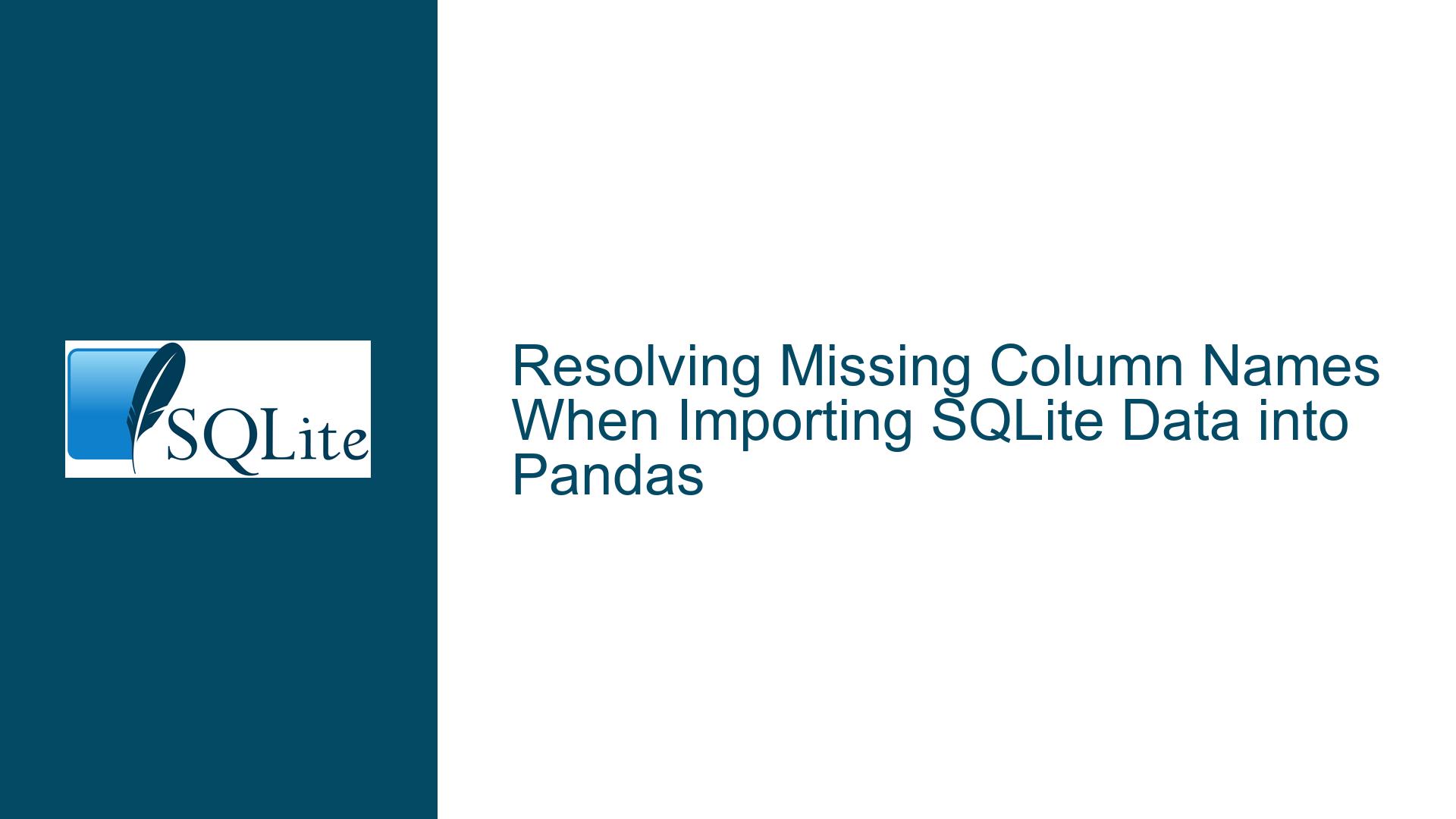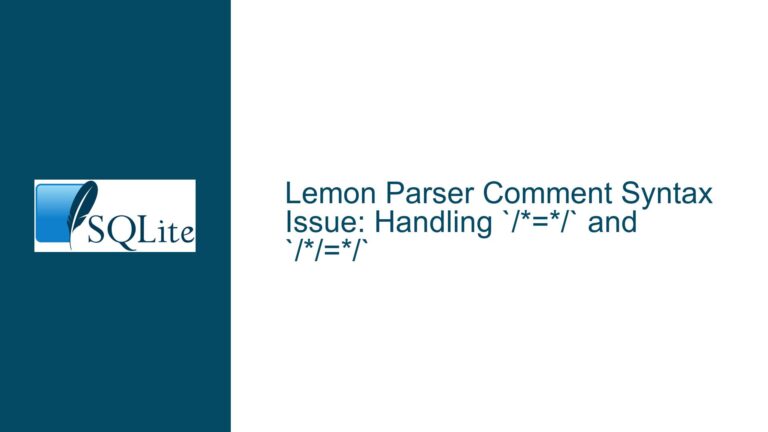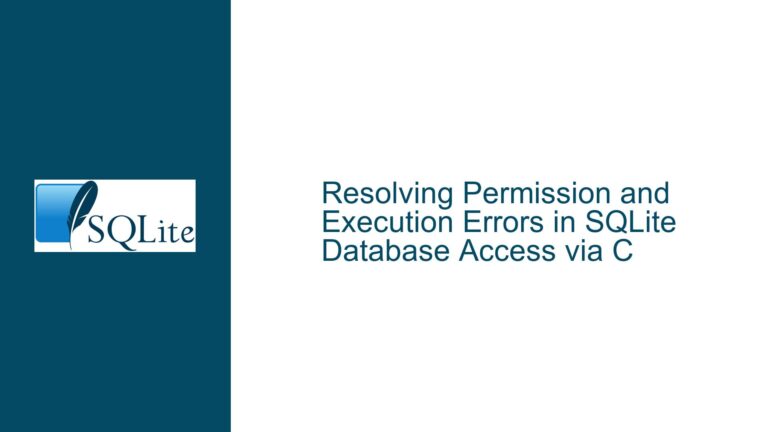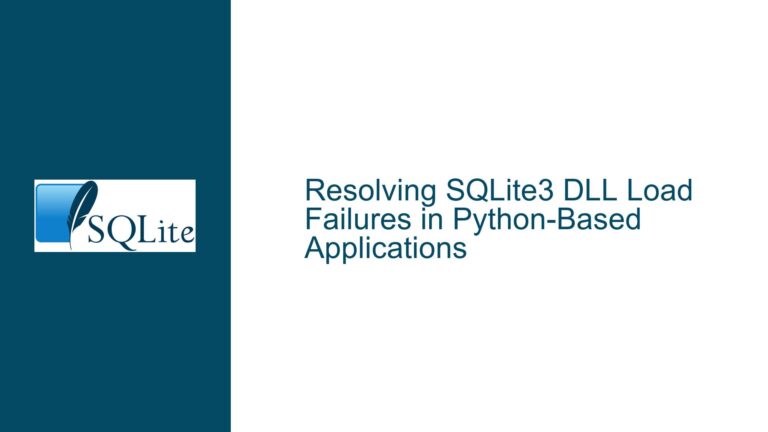Resolving Missing Column Names When Importing SQLite Data into Pandas
Understanding Column Name Absence in Pandas DataFrames from SQLite3 Queries
Issue Overview: Column Metadata Not Captured During Data Retrieval
When transferring data from an SQLite3 database to a Pandas DataFrame using Python’s sqlite3 library, developers often encounter scenarios where column names fail to propagate into the DataFrame structure. This manifests in errors such as "Column not found" when attempting to reference columns by name, even when explicit column names are specified in the SQL SELECT statement. The root of this behavior lies in the interaction between the SQLite3 cursor’s data retrieval methods and Pandas’ DataFrame constructor.
SQLite3 cursors return query results as raw tuples by default, devoid of metadata such as column names. When cursor.fetchall() is used, it extracts only the row values, leaving column names behind. Pandas’ DataFrame constructor, when fed a list of tuples, assigns default integer column labels (0, 1, 2, etc.) because it lacks explicit instructions to map SQL columns to DataFrame headers. This creates a mismatch between the user’s expectation of named columns and the actual integer-indexed structure.
The problem persists even when explicit column names are included in the SQL query (e.g., SELECT column1, column2 FROM table) because the cursor’s execution method does not automatically surface metadata to the application layer. The absence of column name propagation leads to downstream issues in data manipulation, such as failures in column-specific operations (e.g., df['column1']) or slicing by label (e.g., rows.loc[:, 'column2']).
Possible Causes: Metadata Handling in SQLite3 Cursors and Pandas Integration
Cursor Execution Without Metadata Extraction:
The SQLite3Cursorobject’sexecute()method processes queries but does not expose column names by default. While the cursor stores metadata in itsdescriptionattribute after execution, this data is not automatically integrated into result sets retrieved viafetchall(),fetchone(), orfetchmany(). Thedescriptionattribute contains tuples with column name, type, and other details, but developers must explicitly extract and apply this information.Pandas DataFrame Constructor Assumptions:
When creating a DataFrame usingpd.DataFrame(cursor.fetchall()), Pandas infers the structure solely from the data’s shape and content. Without explicit column names provided via thecolumnsparameter, the DataFrame defaults to integer-based column labels. This is a deliberate design choice to avoid assumptions about external data sources’ metadata.Implicit vs. Explicit Data Retrieval Methods:
Lower-level cursor-based retrieval (e.g.,fetchall()) operates at a granular level, separating data from metadata. Higher-level methods likepd.read_sql_query()abstract this complexity by internally querying the cursor’sdescriptionattribute and mapping column names to DataFrame headers.Schema Ambiguity in
SELECT *Queries:
While not directly causing missing column names, usingSELECT *can introduce unpredictability if the underlying table schema changes (e.g., columns added/removed). This exacerbates confusion when column indices shift, but the core issue remains the lack of explicit column name mapping during data import.
Troubleshooting Steps: Ensuring Column Name Integrity in DataFrames
Step 1: Directly Retrieve Column Names from Cursor Description
After executing a query, the cursor’s description attribute holds column metadata. Extract column names programmatically:
import pandas as pd
import sqlite3
cnxn = sqlite3.connect("c:/users/dsnos/sqliteAdventureWorks")
c = cnxn.cursor()
c.execute('SELECT * FROM salestaxrate')
# Extract column names from cursor description
column_names = [description[0] for description in c.description]
# Create DataFrame with explicit column names
rows = pd.DataFrame(c.fetchall(), columns=column_names)
print(rows.loc[:, 'TaxType':'TaxRate']) # Use actual column names
This approach ensures column names are mapped correctly, even when using SELECT *.
Step 2: Leverage Pandas’ Built-in SQL Reader Functions
The pd.read_sql_query() method automates column name extraction, reducing boilerplate code:
import pandas as pd
import sqlite3
cnxn = sqlite3.connect("c:/users/dsnos/sqliteAdventureWorks")
query = 'SELECT * FROM salestaxrate'
rows = pd.read_sql_query(query, cnxn)
print(rows.loc[:, 'TaxType':'TaxRate'])
This method internally accesses the cursor’s description attribute and constructs the DataFrame with proper column headers.
Step 3: Validate SQLite Table Schema
Ensure the SQLite table contains the expected columns by querying its schema:
c.execute("PRAGMA table_info(salestaxrate)")
schema = c.fetchall()
print(schema) # Outputs [(0, 'TaxType', 'TEXT', 0, None, 0), ...]
This confirms whether the column names exist as intended in the database, ruling out schema mismatches.
Step 4: Use Parameterized Column Lists in SQL Queries
Avoid SELECT * in favor of explicit column lists to eliminate ambiguity:
c.execute('SELECT TaxType, TaxRate FROM salestaxrate')
column_names = [description[0] for description in c.description]
rows = pd.DataFrame(c.fetchall(), columns=column_names)
Explicit column selection future-proofs the code against schema changes and clarifies data expectations.
Step 5: Debugging Column Name Mismatches
If errors persist, verify case sensitivity and whitespace in column names. SQLite is case-insensitive for ASCII characters but preserves case in metadata. Ensure DataFrame column references match the exact case and spacing returned by c.description.
Step 6: Utilize ORM Layers for Automated Mapping
For complex projects, consider using an Object-Relational Mapping (ORM) library like SQLAlchemy, which automates column name mapping and type conversion:
from sqlalchemy import create_engine
engine = create_engine('sqlite:///c:/users/dsnos/sqliteAdventureWorks')
rows = pd.read_sql_table('salestaxrate', engine)
This bypasses manual cursor management entirely.
By systematically addressing metadata extraction, leveraging Pandas’ utilities, and validating schema integrity, developers can ensure seamless column name integration when moving data from SQLite3 into Pandas DataFrames.






